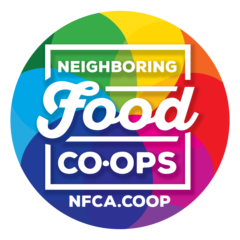Co-ops are a successful alternative to business as usual, and they may be more common than you may think. So we put together a map that includes many of the co-operative enterprises here in the Northeast that are enabling people to build a better world for themselves, their families and their communities.
Click on the links below to learn more about our Co-operative Economy:
View Our Region’s Co-operative Economy in a larger map
The Neighboring Food Co-op Association (NFCA) is more than 25 food co-ops in New England, with over 90,000 individual members. Together, our co-operatives have a dramatic impact on local economies, providing employment for 1,400 people and purchasing more than $33 million in local products (2007).
And if you take into account other co-operative businesses, you can see the difference co-operation makes in our region. A study completed in 2009 by the University of Wisconsin found that there were an estimated 1,400 co-ops here in New England, operating across sectors and industries — from farmer and fishery co-ops to worker co-ops, credit unions to energy co-ops, and artists’ co-ops to housing co-ops. Together, these businesses are locally owned by more than 5 million members and employed over 22,000 people.
Further, the study estimates that across the United States there are almost 30,000 co-operative enterprises, operating 73,000 places of business. These co-ops generate over $500 billion in revenue and more than $25 billion in wages. Americans hold 350 million memberships in co-operative enterprises which generate nearly $79 billion in total impact from patronage refunds and dividends.
Together, our co-operatives contribute to an economy that puts people before profit, rooted in the principles and values of a movement that is locally rooted, but global in its impact.

